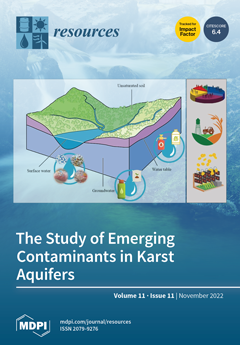Indonesia has been actively promoting the Sustainable Development Goals (SDGs) agreed upon at the United Nations General Assembly in 2015. Pursuing economic expansion through extraction of natural resources is an obsolete paradigm that is becoming increasingly outdated. Therefore, the geopark concept has broken
[...] Read more.
Indonesia has been actively promoting the Sustainable Development Goals (SDGs) agreed upon at the United Nations General Assembly in 2015. Pursuing economic expansion through extraction of natural resources is an obsolete paradigm that is becoming increasingly outdated. Therefore, the geopark concept has broken the idea of economic progress that damages the environment. Geoparks seek to safeguard geodiversity, educate the public about geological history, and assist the long-term economic growth of geopark areas, particularly through geotourism. Geotourism is a sort of creative tourism that is fast growing across the world. This paper aims to assess the existing status and geotourism potential in order to identify the best geosites for the West Lampung region’s initial geopark development. The methods of this study are a geology and geopark literature review, fieldwork, data analysis, and synthesis. The procedure includes inventorying and identifying geodiversity. The study looked at rock and outcrops to piece together the geological history of the West Lampung region. This study showed that the West Lampung region offers several remarkable geosites with significant geotourism development potential. Asam Lake, Nirwana Crater, and Point View Suoh Valley in the Suoh part have the greatest final values, followed by Batubrak Fault Depression in the Fault Depression section. The Batubrak Fault Depression and Asam Lake have significant scientific and tourist value, particularly in terms of portrayal, uniqueness, perspectives, scenery, and natural surroundings. In the Suoh section, Nirwana Crater, Kopi Susu Crater, Keramikan Crater, and Point View Suoh Valley have significant scientific importance but poor educational and tourism value, while the other sites have low scientific, tourist, and educational value, thus placing the area at the bottom of the assessment even though overall it is of medium value. It can be concluded that several geosites in West Lampung have poor value due to some factors such as location accessibility, tourism infrastructure, and location management. Looking at the total findings, basic tourism infrastructure, visitor center, and tour guide services, as well as promotional efforts, are important factors in attracting more tourists to the West Lampung geosites.
Full article





